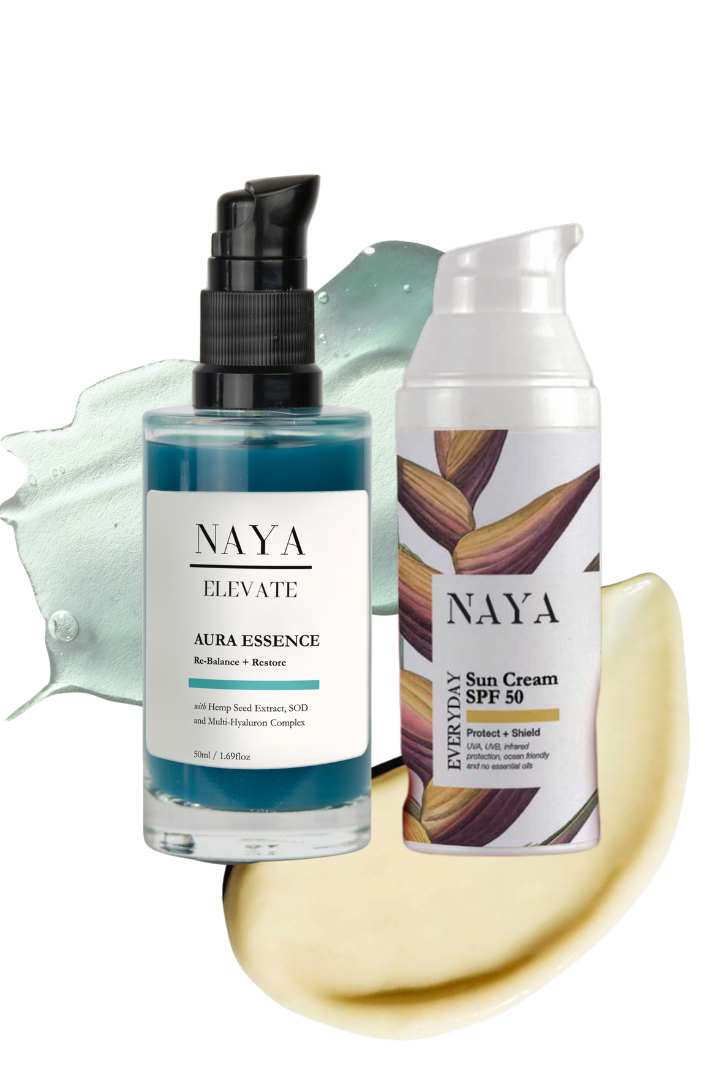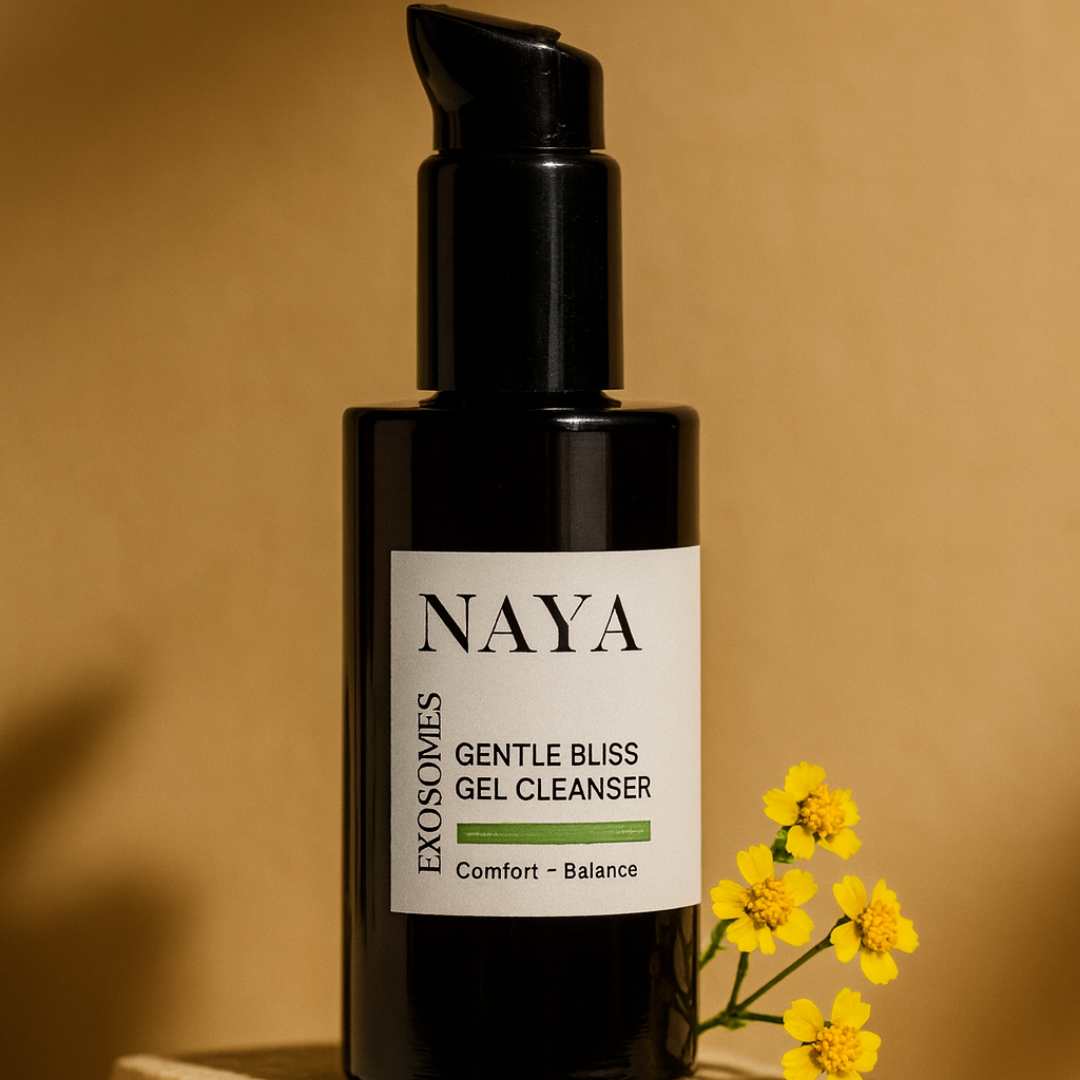5 Essential Tips for a Healthy Skin Flora
Microbiome - what is it and what does it?
We are all our own ecosystem. Maybe it's a scary thought, but there are as many bacteria in and on us as there are cells in our bodies. But don't worry, these little helpers are essential to keep your entire body functioning. What exactly is happening on our skin and inside us, how you can promote or restore the balance of your ecosystem and what pH has to do with it, you can find out here!
What we will talk through in this Blog:
- Gut microbiome: known immune support
- Skin microbiome: what is it and what does it do
- What does pH have to do with the microbiome?
- Out of balance - what to do?
- Tips for a balanced microbiome
1. GUT MICROBIOME: KNOWN IMMUNE SUPPORT
The importance of our gut flora, i.e. the types of bacteria found in our gut, is quite well known and researched. We all know by now as well that a healthy gut is crucial for a well-functioning immune system. As it is here that the defence bodies are tasked with fighting off foreign bodies, viruses and bacterial invaders. Our "good" gut bacteria are responsible for this. And have many other valuable tasks to keep us well and healthy. In a holistic wellbeing approach, mental treatment is often supported by a personalised diet plan that builds up and strengthens the gut flora. Why? Because the intestine and our brain are in close exchange with each other by means of messenger substances. It has been discovered, for example, that a disturbance of the bacterial cultures in the gut has a negative effect on patients with depression. And just the other way round, the mental suffering of patients also has an effect on the health and functionality of the gut flora. Perhaps you have heard or experienced yourself that people suffering from depression or similar mental illnesses get sick more often. This is due to a lowered immune system because the gut microbiome cannot function properly. In order to compensate for this imbalance, a nutritional plan is created in a holistic treatment approach, which, in addition to other measures such as avoiding sugar or simple wheat, focuses on the intake of pro- and prebiotic bacteria.
A healthy gut keeps us and many important functions of our body running! But now let's move on to a much lesser-known microbiome that is unfortunately far too often underestimated and forgotten about. But not with us!
2. MICROBIOME OF THE SKIN: EXTERNAL BACTERIA POWER
That's right, our largest organ is its very own microbiome. With all the knowledge we've already been able to share here about the skin, I think this is another exciting new fact! But let's start from the beginning:
What is the skin microbiome?
The development of the skin microbiome begins at birth. No matter how the baby is born, it absorbs bacteria through the mother and thus lays the foundation for its own microbiome. From there on, a wide variety of environmental influences play a role in the development of the skin microbiome. Things that the infant comes into contact with strengthen the skin flora. By the way, bacteria enter the intestine through the mouth, which also builds up and strengthens the intestinal flora. So it's best to let the child explore its environment. It is incredibly important that we are exposed to as many different types of bacteria as possible at such a young age so that our microbiome can develop well and our immune system can function properly later on. Throughout life, geographic location, sun exposure, stress, diet, exercise, smoking or alcohol consumption also play a role when it comes to our skin flora and how it develops.
Early stages in our understanding of the skin microbiome
In fact, research on this microbiome has only been going on for about 10 years, but there are already some very interesting findings. For example, it has been found that there is a different mix of bacteria depending on the part of the body. Which type of bacteria feels most comfortable where depends on whether the skin at that spot is oily, dry or moist. But no matter where they are located, they fulfil an enormously important task. They support various metabolic processes as well as wound healing and protect us from "bad" bacteria, viruses and other invaders entering our body through our skin and wreaking havoc. They do this, for example, by producing proteins that are deadly for these foreign organisms because they act like antibiotics. But the influence of our good bacteria also reaches deeper into the lower layers. There are immune cells there that are equipped with receptors and fight off unwanted invaders on command. Our skin flora protects us from diseases and infections in the same way as our intestinal flora and coordinates our immune system.
Your Skin has superpowers
I don't know about you, but now my skin feels even more like a super organ that not only holds me together and catches my summer tan and balances my temperatures. It's quite amazing what goes on there on a microscopic scale! But all this now raises the question: What happens when the skin microbiome is disturbed? What factors bring it out of balance in the first place and how do we get it back into balance?
3. What does pH have to do with the microbiome?
First of all, we need to understand what balance even means in the case of the skin flora. This is where pH comes into play. You may have noticed that we always show the pH of our products on the product detail page. For a functioning skin barrier and healthy skin flora, the pH value is crucial, because our bacteria need an optimal value to be able to survive. This optimum lies in the slightly acidic range of 4.8-5.5. In this environment, the bacteria of our microbiome can ideally produce the antimicrobial molecules that fend off attackers. However, a person's entire body does not have the same pH level. It varies a little depending on age and body part. The sweat and sebum from our glands determine the pH and form the protective acid mantle of the skin that we often talk about here. This acid mantle serves as a kind of buffer between germs and bacteria that want to change the pH of the skin from the outside and thus disturb the flora. By the way, ceramides, which are also produced in the best possible way at a slightly acidic pH value, are absolutely essential for the skin barrier. They are a component of our skin lipids and help our skin to stay tight: Moisture is better stored and pathogens have an even harder time getting in, even if they have already broken through the front of the acid mantle.
A stable pH value is therefore necessary to keep skin functions intact; to strengthen immune defences, to keep the moisture balance stable and to support bodily functions.
4. Out of pH balance - what to do?
The pH value is therefore the environmental condition of our skin flora. If this condition changes, becomes too acidic or too alkaline, the skin flora is vulnerable and out of balance. This can lead to a dysbalance between our good bacteria and the disease-causing bacteria. This is how skin diseases and changes can develop or worsen. With too few of our own health-promoting bacteria, germs have an easy time multiplying, causing inflammation and injury. The lower the diversity of bacteria, the more susceptible the skin is.
In fact, scientists have been able to establish a link between certain skin diseases and the presence of specific microorganisms:
Acne: Propionibacterium acnes.
This probacterium is often involved in the development of inflammatory acne. Here, it is important to take away the habitat of this bacterium by strengthening the good skin flora so that the inflammatory foci can be contained.
Studies have shown that certain probiotics, particularly Lactobacillus acidophilus and Bifidobacterium lactis, have been shown to improve the appearance of acne. The spread of acne pathogens on the skin surface was reduced and at the same time the production of ceramides was stimulated.
Rosacea:
It is now known that a bacterial overgrowth of the small intestine is linked to rosacea. If people with rosacea are treated for this so-called SIBO, the rosacea often disappears completely.
Neurodermatitis: Staphylococcus aureus
The typical endogenous eczema, i.e. open, scaly skin, can often lead to an overgrowth of Staphylococcus aureus. Thus, itching and further inflammations are added to the open wounds. Increasing and strengthening the good germs of the skin flora can significantly alleviate these symptoms.
How? There are treatment methods in which ceramides, niacinamide or selenium-rich spring water, among others, are added to the natural basic care. Newer therapeutic strategies try to correct the damaged microbiome in new ways. For example, C-section babies are rubbed with the mother's vaginal secretion to promote the initial colonisation of the skin. Whether this approach has an effect on the later development of skin diseases is not yet known.
Psoriasis: antimicrobial peptides
Because the microbiome is imbalanced, psoriasis results in an overabundance of antimicrobial peptides that trigger the immune system to go into full defence.
How. Intestinal cleansing methods have been used for years for immune diseases like psoriasis, because 80% of the immune system is located right there: in our intestines. A medically guided intestinal cleansing, healing fast or detoxification cure supports the external treatment of the skin.
Seborrhoeic eczema: Malassezia yeasts
When too many of these yeasts accumulate on the skin, yellowish greasy scaling occurs. However, by strengthening the natural bacteria of the skin flora, these yeasts are pushed back and the symptoms are relieved.
How? Certain medicines prescribed by your dermatologist can help.
For exact treatment and therapy methods, we recommend that you visit a dermatologist or dermatologist in any case, in order to have a detailed and individual consultation and examination.
5. 5 TIPS FOR A HEALTHY SKIN FLORA
So everything cries out to keep the skin microbiome balanced. Here are a few tips on how to create a habitat for our health-promoting skin bacteria so they can support us ideally:
1. Don't "over-cleanse"
Washing too often can upset the pH of the acid mantle. As you've read above, it's important to avoid this so that germs don't have a chance to take up residence in the first place.
2. Shower properly
Not too long and especially not too hot! Otherwise important lipids will wash away our good microorganisms and their breeding ground. Since the pH-value of water is about 7, the acid mantle is irritated when showering for too long and we lose moisture due to the washed up skin barrier. Germs thus have free rein. Showering every day is not exactly good for our skin flora either. It's better to skip a day or two and gently cleanse only the underarm and intimate areas every day. 3.
3. Use mild cleansers
Mild here means that the cleansing product should have a pH value of 5.5-7. It should also not contain any fragrances or artificial colourings to protect the skin. Our cleansing oil, for example, cleanses particularly mildly with sugar surfactants that thoroughly cleanse the skin barrier and acid mantle, but leave them intact.
4 Less is more
If you don't wear make-up or sunscreen during the day, you don't necessarily need to use a cleanser for your face in the evening, because water already washes away dust particles and other remnants of the day. If you do wear make-up, however, it is best to use a mild cleanser as described above.
5. be careful when buying products
When choosing products, make sure they are gentle on the skin. You should also pay attention to the pH value, especially for products that are used daily, such as creams or deodorants. Our skin is slightly acidic, around 5.5, so if we use a product with a very different pH, it can attack our microbiome. If the product is too acidic, this leads to the so-called "chemical burn". With products that are too alkaline, the acid mantle of the skin is damaged. So you should not use real soaps for facial care. The pH value of most of our products is between 4 and 6, which is very close to the value of the skin and can therefore be used without hesitation. Products of this type are also called pH skin neutral. At NAYA, all our products have been formulated to be pH neutral to take care of sensitive skin.
It's quite a lot that our skin does for us every day. I hope this post has given you some new info and helped you consider your skincare routine and habits. Take care of yourself and your good bacteria!













Leave a comment